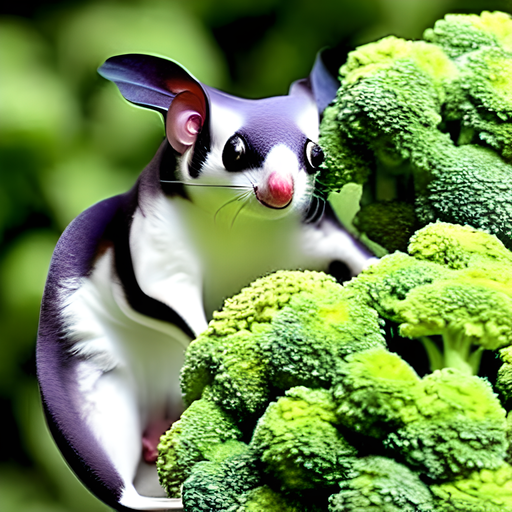What Fruits Can Sugar Gliders Eat
Have you ever wondered what fruits sugar gliders can eat? Sugar gliders are adorable little creatures that make great pets. They have a unique diet that consists of a mix of fruits, vegetables, and proteins. In this article, we will explore the world of fruits and discover which ones are safe and healthy for sugar gliders to consume.
So, what fruits can sugar gliders eat? Let’s find out.
Fruits that are safe for sugar gliders
When it comes to feeding your sugar glider fruits, there are a few important things to keep in mind. First and foremost, you should always feed them fresh fruits that are ripe and free from pesticides. It’s also important to introduce new fruits slowly to their diet to avoid any digestive problems. Here are some fruits that are safe and healthy for sugar gliders:

1. Apples
Apples are a great source of vitamins and fiber for sugar gliders. They can be fed both the flesh and the skin of the apple. However, it’s important to remove the seeds and core as they can be toxic.
2. Grapes
Grapes are another fruit that sugar gliders can enjoy. They are rich in antioxidants and vitamins. However, due to the high sugar content, grapes should only be given as an occasional treat.
3. Papaya
Papaya is a tropical fruit that is packed with nutrients and enzymes that aid digestion. It’s a favorite among sugar gliders and can be given in small quantities.
4. Blueberries
Blueberries are a superfood for both humans and sugar gliders. They are high in antioxidants, fiber, and vitamins. Sugar gliders can enjoy a few blueberries as a tasty and nutritious snack.
5. Watermelon
Watermelon is a juicy and refreshing fruit that sugar gliders can enjoy. It’s hydrating and contains vitamins and minerals. Make sure to remove the seeds and rind before feeding it to your sugar glider.
6. Mango
Mangoes are a tropical delight that sugar gliders can also indulge in. They are rich in vitamins, fiber, and antioxidants. Just make sure to remove the pit before offering it to your glider.
Fruits to avoid feeding sugar gliders
While there are many fruits that are safe for sugar gliders, there are some that should be avoided. Here are a few fruits that can be harmful to sugar gliders and should not be included in their diet:
1. Citrus fruits
Citrus fruits such as oranges, lemons, and grapefruits are too acidic for sugar gliders and can cause digestive issues. It’s best to avoid feeding these fruits to your glider.
2. Avocado
Avocado is toxic to many animals, including sugar gliders. It contains a substance called persin, which can be harmful to their health. It’s best to keep avocados away from your sugar glider.
3. Stone fruits
Stone fruits like peaches, cherries, and plums should also be avoided. They contain pits that can be a choking hazard for sugar gliders. Stick to fruits without pits for their safety.
Frequently Asked Questions
1. Can sugar gliders eat bananas?
Yes, sugar gliders can eat bananas. They are a good source of potassium and vitamin B6. However, bananas should be fed in moderation due to their high sugar content.
2. Can sugar gliders eat strawberries?
Yes, sugar gliders can eat strawberries. They are low in calories and high in vitamins and antioxidants. Just make sure to wash them thoroughly before feeding them to your glider.
3. Can sugar gliders eat pineapple?
Pineapple can be given to sugar gliders in small amounts. It contains enzymes that aid digestion, but it should be fed sparingly due to its high acidity and sugar content.
4. Can sugar gliders eat citrus fruits?
No, citrus fruits should be avoided as they are too acidic for sugar gliders and can cause digestive issues. Stick to other fruits that are safe for their consumption.
Final Thoughts
Feeding your sugar glider a balanced and nutritious diet is crucial for their overall health and well-being. Fruits are an important part of their diet as they provide essential vitamins and minerals. Remember to introduce new fruits gradually and always feed them fresh and ripe produce. With the right knowledge and care, you can ensure that your sugar glider stays happy and healthy for years to come.







